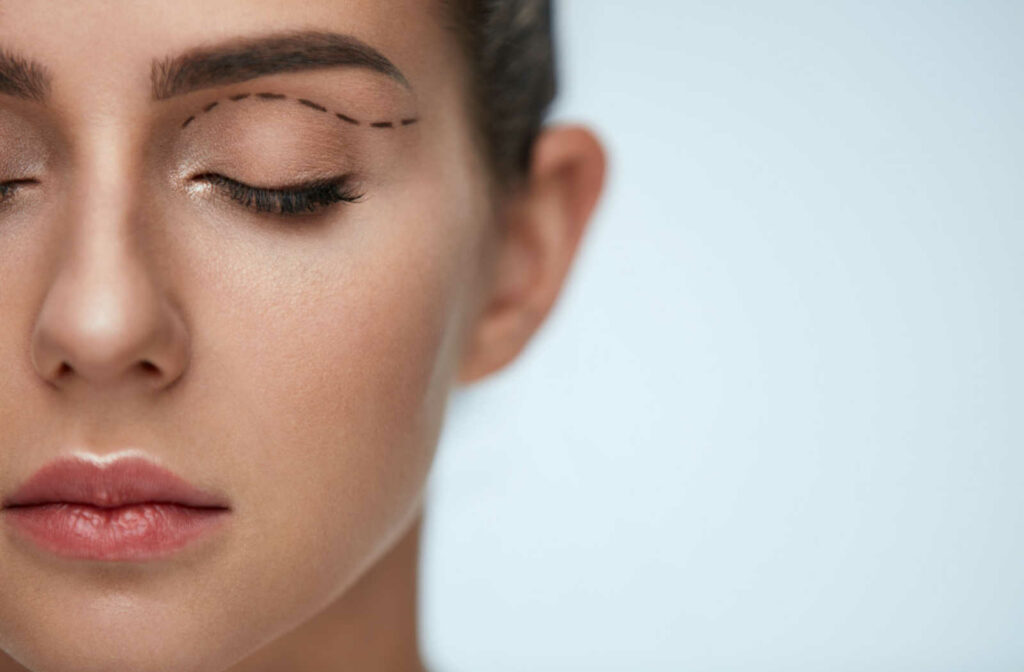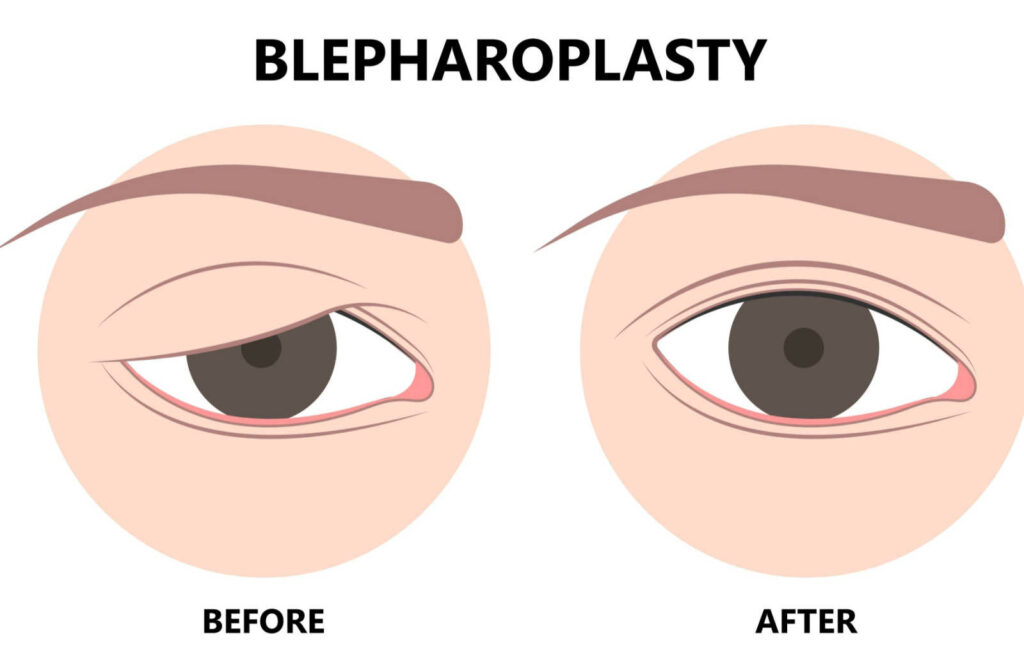What Is an Eyelid Tuck & How Does it Work?
As we age, our eyelids can droop, hang, and create vision impairments. While it’s completely normal, and a natural part of aging, it can be annoying to deal with drooping eyelids. We all want to look and feel our best, no matter what age we are.
At Amara Aesthetic Surgery & Dermatology, we’re here to help. We offer eyelid tucks to help you look, feel, and see your best! Learn more about the procedure here.
What Is Blepharoplasty?
An eyelid tuck or eyelid lift is known as blepharoplasty.
This procedure removes excess skin, fat, and muscle from the upper and lower eyelids to help define the eyes. As we age, our eyelids stretch and our eye muscles can weaken. Blepharoplasty surgery is used to correct these issues.
This procedure can’t correct dark circles, fine lines, or wrinkles around the eyes. However, by tightening the loose or droopy skin around the eyes, this procedure can give patients a refreshed, youthful look. Additionally, blepharoplasty can help improve a patient’s vision.
Over 100,000 people in the United States undergo blepharoplasty surgery every year. Oftentimes, eyelid tucks are performed in conjunction with brow lifts, face lifts, or other skin resurfacing procedures.
Considerations Before an Eyelid Tuck
Like any surgery, you need to consult with an expert surgeon to determine if blepharoplasty is right for you.
Before your surgery, your doctor should review your complete medical history and overall health. This can include questions regarding:
- A history of smoking
- Cardiovascular disease
- Diabetes
- High blood pressure or other circulatory disorders
- A tendency to scar
- Any blood clotting disorders
- Thyroid problems
- Any eye conditions/diseases
- Your skin type, age, & background
- Your attitude & expectations
Additionally, your surgeon should explain:
- What to expect from the procedure
- Where the procedure will take place
- Options for anesthesia
- Possible complications
- Other recommended procedures
Before you leave your consultation, make sure you feel comfortable and confident with all the information you’ve been given. If you have any questions or concerns, ask your doctor.
Blepharoplasty Process & Procedure
Pre-Operation
Before your blepharoplasty, you’ll complete a consultation with your doctor. During this consultation, you’ll review the aforementioned considerations and they’ll determine whether or not you’re a good candidate for surgery.
You’ll also complete some physical exams, such as:
- A comprehensive eye exam
- Visual field testing
- Eyelid measurement & photography
Your healthcare provider will review your pre-op care instructions with you in detail. This can include a temporary pause on taking certain medications, ensuring you have transportation to and from your surgery, and a mandated break from smoking (if necessary).
Blepharoplasty is usually done as an outpatient procedure.
During the Procedure
During your procedure, the doctor will make sure you’re comfortable with anesthesia. The type of anesthesia will depend on a few factors and your doctor should discuss this with you before your operation.
The doctor will remove any excess skin, muscle, and fat from your upper eyelids. They’ll also remove or redistribute excess fat around the lower lids if necessary.
This procedure usually takes 5 to 7 hours.
Post-Operation
After your procedure, you may experience some tightness or soreness around your eyelids. Your eyes may feel dry and irritable for a few days. Bruising and swelling are also normal side effects following surgery.
It’s crucial to follow your post-operative care instructions, especially:
- Maintaining follow-up appointments
- Avoiding certain activities/environments
- Contacting your doctor if you experience any adverse reactions
You’ll wait in a recovery room immediately after your surgery to allow doctors to monitor you for any complications. Common side effects after blepharoplasty include:
- Blurred vision
- Frequent tearing
- Light sensitivity
- Double vision
- Swelling/numbness
Help Yourself at Home
There are some things you can do after your blepharoplasty to make yourself more comfortable. Always follow your doctor’s instructions over these remedies to ensure you have the best possible recovery.
DO |
DON’T |
|
|
Seek medical attention immediately if you experience:
- Shortness of breath
- Chest pain
- Unusual heart rate
- Severe new eye pain
- Bleeding
- Vision problems
Many patients say they feel more confident and comfortable after blepharoplasty. For some people, surgery results may last a lifetime. For others, droopy eyelids can recur. In any case, we’re here to help you.
Is an Eyelid Lift Right for Me?
To find out if blepharoplasty is right for you, contact our team today to book a consultation!



